Guidance, Navigation and Control Algorithms for Satellite Formation Flying
A special issue of Aerospace (ISSN 2226-4310). This special issue belongs to the section "Astronautics & Space Science".
Deadline for manuscript submissions: 31 July 2024 | Viewed by 3106
Special Issue Editors
Interests: development of AOCS/GNC algorithms; simulation systems; flight software for autonomous formation flying and proximity operation applications
Interests: GNC; onboard autonomy; precise navigation; rendezvous; formation-flying
Special Issue Information
Dear Colleagues,
I am pleased to announce a new open access Special Issue of the MDPI journal Aerospace, titled “Guidance, Navigation and Control Algorithms for Satellite Formation Flying”.
Formation flying missions enable technological applications of scientific and societal relevance, where standard monolithic solutions fail. Distributed space systems, swarms, and fractionated systems are a key asset to build extended, flexible, and scalable space endeavours. Moreover, a significant number of current technological research efforts address multi-satellite missions devoted to in-orbit servicing and active debris removal activities.
The operation of satellites in proximity, with different levels of cooperation among them, demands the development of relative guidance, navigation, and control (GNC) systems, which entail all the functions that complement the standard orbit/attitude determination and control tasks of single-satellite missions. In addition, mission safety in the sense of collision avoidance among the spacecraft of the formation has to be ensured. Frontier research efforts on the development of relative GNC algorithms focus on improving navigation/control performances, increasing the level of autonomy and minimizing the computational load while ensuring robust and reliable approaches suitable for spaceborne implementation.
This Special Issue aims to collect contributions in a range of aspects related to GNC systems, spanning from relative navigation and the establishment and maintenance of the required relative configuration between the elements of a space distributed system, to collision avoidance monitoring and manoeuvring. Particular attention is devoted to algorithms’ development and verification. Potential applications include, but are not limited to, the following:
- Formation flying missions for Earth observation;
- Formation flying missions for space observation;
- In-orbit servicing missions;
- In-orbit inspection and active debris removal missions;
- Swarms missions;
- Formation flying missions around small bodies.
Dr. Gabriella Gaias
Dr. Jean-Sébastien Ardaens
Guest Editors
Manuscript Submission Information
Manuscripts should be submitted online at www.mdpi.com by registering and logging in to this website. Once you are registered, click here to go to the submission form. Manuscripts can be submitted until the deadline. All submissions that pass pre-check are peer-reviewed. Accepted papers will be published continuously in the journal (as soon as accepted) and will be listed together on the special issue website. Research articles, review articles as well as short communications are invited. For planned papers, a title and short abstract (about 100 words) can be sent to the Editorial Office for announcement on this website.
Submitted manuscripts should not have been published previously, nor be under consideration for publication elsewhere (except conference proceedings papers). All manuscripts are thoroughly refereed through a single-blind peer-review process. A guide for authors and other relevant information for submission of manuscripts is available on the Instructions for Authors page. Aerospace is an international peer-reviewed open access monthly journal published by MDPI.
Please visit the Instructions for Authors page before submitting a manuscript. The Article Processing Charge (APC) for publication in this open access journal is 2400 CHF (Swiss Francs). Submitted papers should be well formatted and use good English. Authors may use MDPI's English editing service prior to publication or during author revisions.
Keywords
- relative navigation
- relative orbit determination
- spacecraft rendezvous
- satellite formation flying
- formation reconfiguration
- active debris removal
- autonomy
- swarms
- space distributed systems
Planned Papers
The below list represents only planned manuscripts. Some of these manuscripts have not been received by the Editorial Office yet. Papers submitted to MDPI journals are subject to peer-review.
Title: Modeling, simulation and control of a spacecraft: Automated rendezvous under positional constraints
Authors: Simone Fiori; Francesco Rachiglia; Luca Sabatini; Edoardo Sampoaolesi
Affiliation: Department of Information Engineering, Marches Polytechnic University, 60131 Ancona, Italy
Abstract: The purpose of the present research paper is to propose a framework to model, simulate and control a small spacecraft in the proximity of a space station. In particular, rendezvous in the presence of physical obstacles is tackled by a virtual-potential theory within a modern manifold-calculus setting and simulated numerically. The mathematical model of the roto-translational motion of a spacecraft as well as the control fields are entirely written by coordinate-free Lie-group-type formulations. Likewise, the proposed control strategies are expressed in a coordinate-free setting through a structured control fields. A number of numerical simulations complement the theoretical endeavor and guide the reader through an evaluation of the most convenient control strategy among those devised in the present work.






